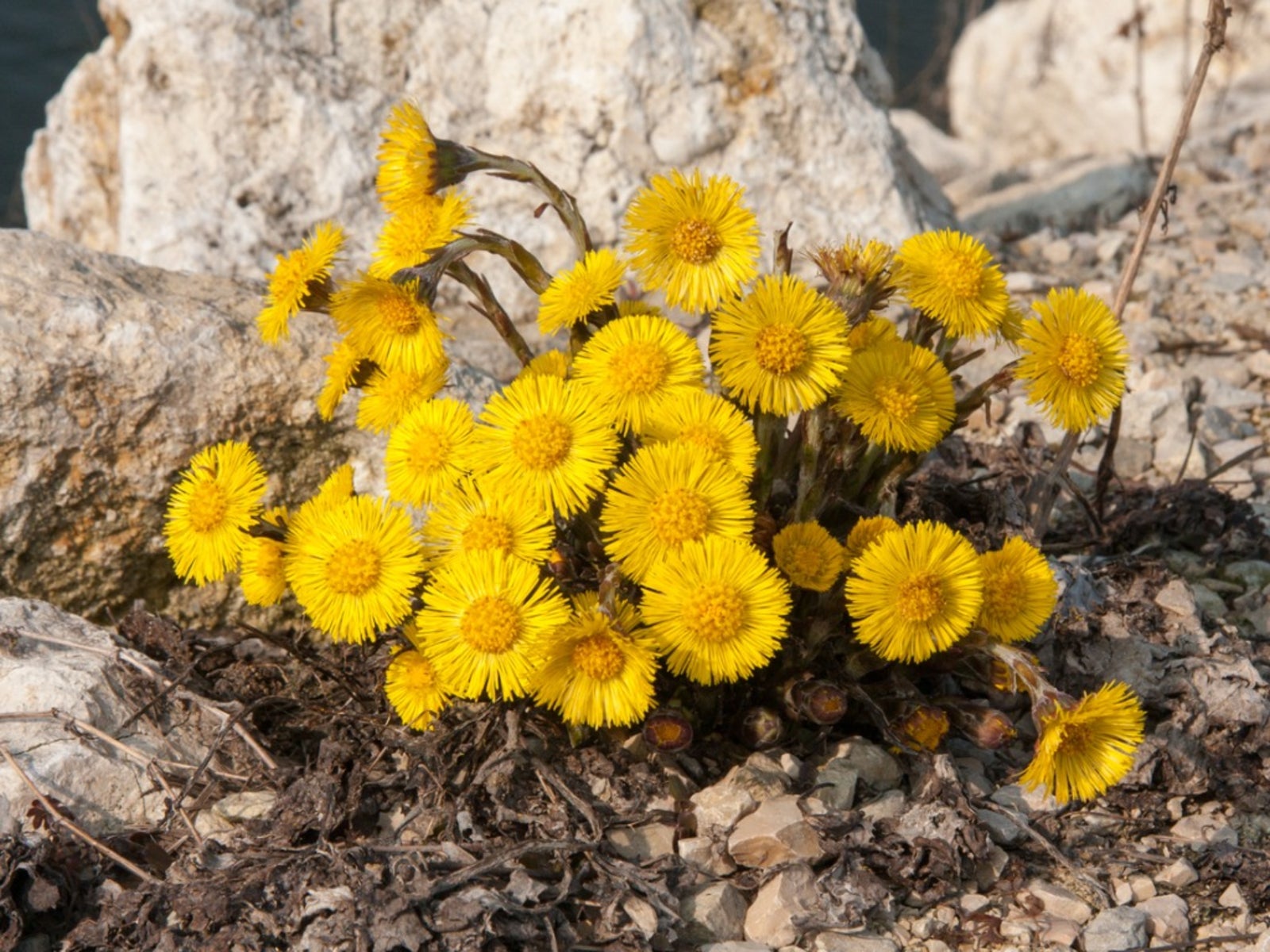Coltsfoot Information: Learn About Coltsfoot Growing Conditions And Control
Once valued as medicine, Coltsfoot can invade your garden space. It's easier to eradicate than some, but it takes a bit of perseverance.


Caroline Bloomfield
Coltsfoot (Tussilago farfara) is a weed that goes by many names, including assfoot, coughwort, horsefoot, foalfoot, bull's foot, horsehoof, clayweed, cleats, sowfoot, and British tobacco. Many of these names refer to animal feet because the shape of the leaves resembles hoof prints.
Due to its invasive habit, learning how to get rid of coltsfoot plants is important.
Coltsfoot Information
Early European settlers brought coltsfoot to the U.S. to use as an herbal remedy. It is said to ease asthma attacks and treat other lung and throat ailments. The genus name Tussilago means cough dispeller.
Today, there is some concern about the use of this herb for medicinal purposes because it may have toxic properties and is known to cause tumors in rats. The undersides of the leaves are covered with a thick, matted, white fiber. These fibers were once used as mattress stuffing and tender.
What is Coltsfoot?
Coltsfoot is a noxious perennial weed with flowers that resemble dandelions. Like dandelions, mature flowers become round, white puffballs with fibers that scatter the seeds on the wind. Unlike dandelions, the flowers arise, mature, and die back before the leaves appear. It's easy to distinguish between the two plants by the foliage.
While dandelions have long, toothed leaves, coltsfoot has rounded leaves that look a lot like the foliage found on members of the violet family. The undersides of the leaves are covered with dense hairs.
The ideal coltsfoot growing conditions consist of moist clay soil in a cool shady location, but the plants can also grow in full sun and other types of soil. They are often seen growing along roadside drainage ditches, landfills, and other disturbed areas. Under reasonably good conditions, coltsfoot spreads by means of creeping rhizomes and airborne seeds.
Gardening tips, videos, info and more delivered right to your inbox!
Sign up for the Gardening Know How newsletter today and receive a free copy of our e-book "How to Grow Delicious Tomatoes".
How to Get Rid Of Coltsfoot
The best method for controlling coltsfoot is hand-pulling. Hand pulling works best when the soil is moist, making it easier to pull up the entire root. Small pieces of root left in the soil can grow into new plants. Cut back the flowers before they go to seed.
Ontario Master Gardeners tell us, "You will have more success to cut, again and again, any leaf that appears, which will have the effect of gradually exhausting the rhizome. "
Another means of eradicating this noxious weed is to cover the area with heavy black plastic, carpeting or other opaque covering and leave it until the rhizomes die for lack of photosynthesis.
Controlling coltsfoot is not as labor-intensive as some noxious weeds, but it does require attention and a bit of perseverance.

Jackie Carroll has written over 500 articles for Gardening Know How on a wide range of topics.
- Caroline BloomfieldManager of Marketing Communications
-
 Looking For Plants To Give You The Soft And Fuzzies? Try These 5 Fuzzy Leaf Plant Options
Looking For Plants To Give You The Soft And Fuzzies? Try These 5 Fuzzy Leaf Plant OptionsLovers of texture, drama, silver foliage and tactile plants will adore these special sensory garden additions. These fuzzy leaf plant options will leave you all aglow
By Susan Albert
-
 Get Ready For A Summer Of Hummers! Grow These Full Sun Hummingbird Plants and Flowers
Get Ready For A Summer Of Hummers! Grow These Full Sun Hummingbird Plants and FlowersIf you’re lucky enough to enjoy a sunny backyard, make sure you are maxing out on your pollinator opportunities and grow these full sun hummingbird plants and flowers
By Tonya Barnett